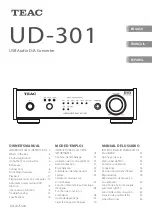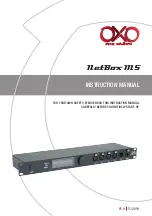
Page 24
©
2017 Sensata Technologies
Installation
AC
DC Service
Panel
AC Service
Panel
DC Electrical System
AC Electrical System
Neutral
Positive
Negative
DC
Grounding
System
Negative
SBJ
GC
GE
GEC-AC
EGC
AC Ground
DC Ground
SBJ
EGC
GC
Neutral
Hot
GEC-DC
GE
GE
GBB
GBB
Grounding Electrode
(AC and DC sides shared)
Grounding Electrode
(DC side dedicated)
Grounding Electrode
(AC side dedicated)
or
or
MS-PAE Series Inverter/Charger
Figure 2-12, Grounding System for MS-PAE Series
2.4 Grounding
Inverters
The MS-PAE Series inverters use two separate electrical systems (AC and DC power), therefore
each electrical system is required to be properly connected to a permanent, common “ground” or
“earth” reference. An inverter system that is properly grounded limits the risk of electrical shock,
reduces radio frequency noise, and minimizes excessive surge voltages induced by lightning. To
understand how the conductors in the electrical circuit will be connected to the system ground,
the following terms should be understood (use Figure 2-12 as a reference):
• Grounded
Conductor
(GC):
The wire/cable in the electrical system that normally carries
current (usually AC neutral and/or the DC negative); and is intentionally connected or “bonded”
to the ground system. This wire, or the ends of this wire, should be colored white or gray.
• Equipment Grounding Conductor (EGC):
A wire/cable that does not normally carry current
and is used to connect the exposed metal parts of equipment—that might be accidentally
energized—to the grounding electrode system or the grounded conductor. This wire or the
ends of this wire should be green or green with a yellow stripe, or this wire can be bare copper.
• Grounding Electrode Conductor
(GEC):
The wire/cable that does not normally carry current,
and connects the grounding electrode at the service equipment to the grounded conductor
and/or the equipment grounding conductor.
• Grounding
Electrode
(GE):
A ground rod or conducting element that establishes an electrical
connection to the earth or common ground reference.
• System Bonding Jumper
(
SBJ
)
:
The connection between the grounded circuit conductor in
the electrical system and the equipment grounding conductor at a separately derived system.
There are two types of grounding – equipment grounding and system grounding.
Equipment Grounding
– The exposed metal parts of equipment in a system usually don’t carry
electricity. However, if exposed metal becomes electri
fi
ed by a live wire, a person touching this live
part could complete the electrical circuit and receive a shock. Equipment grounding prevents shock
by connecting all the exposed metal parts of equipment (via Equipment Grounding Conductors
–EGC) together at a common ground point (Ground Busbar–GBB). This common ground point—
installed in the service disconnect panel for each electrical system (AC and DC)—is then connected
(via Grounding Electrode Conductor–GEC) to the common ground reference, such as a ground rod
(Grounding Electrode–GE). This connection to earth is made at only one point in each electrical
system; otherwise, parallel paths will exist for the currents to
fl
ow. These parallel current paths
would represent a safety hazard and are not allowed in installations wired per the NEC/CEC.















































